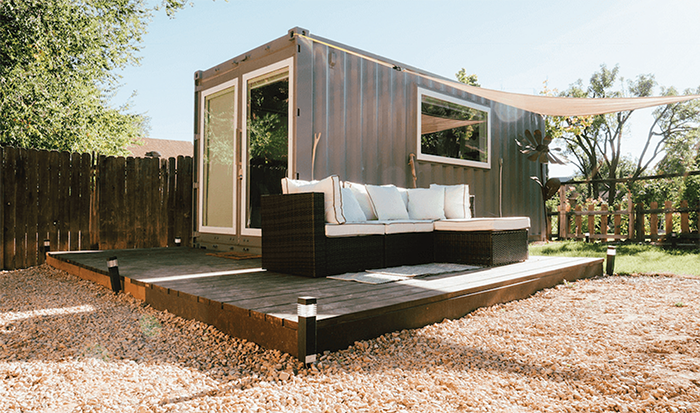Many Americans are turning to shipping container homes says Maximilian Birner
Thinking out of the box
The search for affordable housing continues to be an uphill battle for homeowners nationwide. Around half of Americans now say affordable housing is a problem where they live – a ten percent increase since 2018, according to the Pew Research Center. It’s a trend that has only been accelerated by the Covid-19 pandemic, which severely delayed new-build construction rates and brought the world’s supply chains to a halt. Today, there’s simply not enough homes available to meet demand, resulting in record-high prices and a press for change.
Even if prospective buyers can find homes that fall within their budget (and don’t fall victim to bidding wars), it’s likely to eat up a major chunk of their income. The United States Census Bureau reported that 23 percent of Americans spent over half of their monthly income on housing in 2020. And while salaries have gone up, so have home prices – at about 24 times the rate.
In short: people need more reliable, affordable housing – and quickly.
So, it’s no wonder that both personal and commercial home builders are looking beyond traditional building options to satisfy demand. Enter the shipping container home: an economical – and more sustainable – alternative to traditional home construction. Shipping containers have proven such a viable option for quick and affordable housing, they’ve even been transformed into accommodation for people experiencing homelessness as part of humanitarian projects across the country.
A growing movement
Shipping containers have been transformed into tiny homes, office spaces, and retail pop-ups for years. Long considered a niche market, shipping containers are picking up momentum mainstream as the push for more imaginative solutions to current housing challenges continues. More recently, the movement has sparked a flurry of popular interest, spurring blogs, television shows, and influencers who have built their reputations on constructing, decorating, or living in container spaces.
It’s no surprise why they’ve become so popular. Shipping containers are completely customizable, more sustainable, and quicker to construct than traditional homes. They can also be much more affordable, depending on the homebuyer’s preferred size, location, and how they choose to modify the home.
Affordable housing, shipped wherever you like
One way in which shipping containers are disrupting traditional homebuilding is their ability to drastically cut development times and costs. This is in part fueled by their immediate availability, with more entering the market every day. There are about six to eight million containers set to be retired from commercial use in 2023-2024. Once retired, these containers will be available for purchase by commercial home builders and ready to be delivered to the location of their choice. Boxhub is democratizing access to both new (or ‘one-trip’) and retired shipping containers, taking care of sourcing, inspection, and delivery on behalf of homebuilders nationwide.
Easy-to-build, modular masterpieces
Another element that makes shipping containers easier to work with for home construction is that they come in standardized sizes, specs, and load-bearing capacity. Home builders can choose from a simple range of options, with the most popular sizes being 20- and 40-foot containers. Each is built the same way out of the same materials. This uniformity makes shipping containers easy to combine, stack, and configure as needed throughout the home design and development process.
The predictability of container home construction also cuts development times down substantially for both single-family and multi-family dwellings. Because of their modularity, shipping containers can be configured to create homes as large and complex as clients like – or as simple and compact as a single container.
Adaptable to any location, preferences, or budget
Another aspect that makes shipping container homes a desirable alternative to traditional homes is that they can be customized to fit any buyer’s needs or budget. You can keep costs at a minimum with standardized prefab units, or you can explore a world of customizations and embellishments depending on your clients’ locations or personal preferences.
From a financial standpoint, shipping container homes can be far more affordable than building a traditional home. They require less new construction materials in order to be made livable, reducing expenses even further. In fact, with the right knowledge and resources, a basic, single-family shipping container home can be built for as little as $25,000. For a more luxurious, fully kitted space, a 320-square-foot container apartment averages around $80,000, including all appliances and fixtures. What’s more, these prices are predicted to decrease sharply over the next couple of years, as more modular housing companies enter the market and materials become more readily available. ■
For a list of the sources used in this article, please contact the editor.
Maximilian Birner
www.boxhub.com
Maximilian Birner is Co-Founder & CEO of Boxhub, a leading e-commerce and logistics platform enabling the seamless purchase, delivery, and repurposing of shipping containers. Founded in 2017, the marketplace has become a trusted partner for thousands of buyers across the United States
